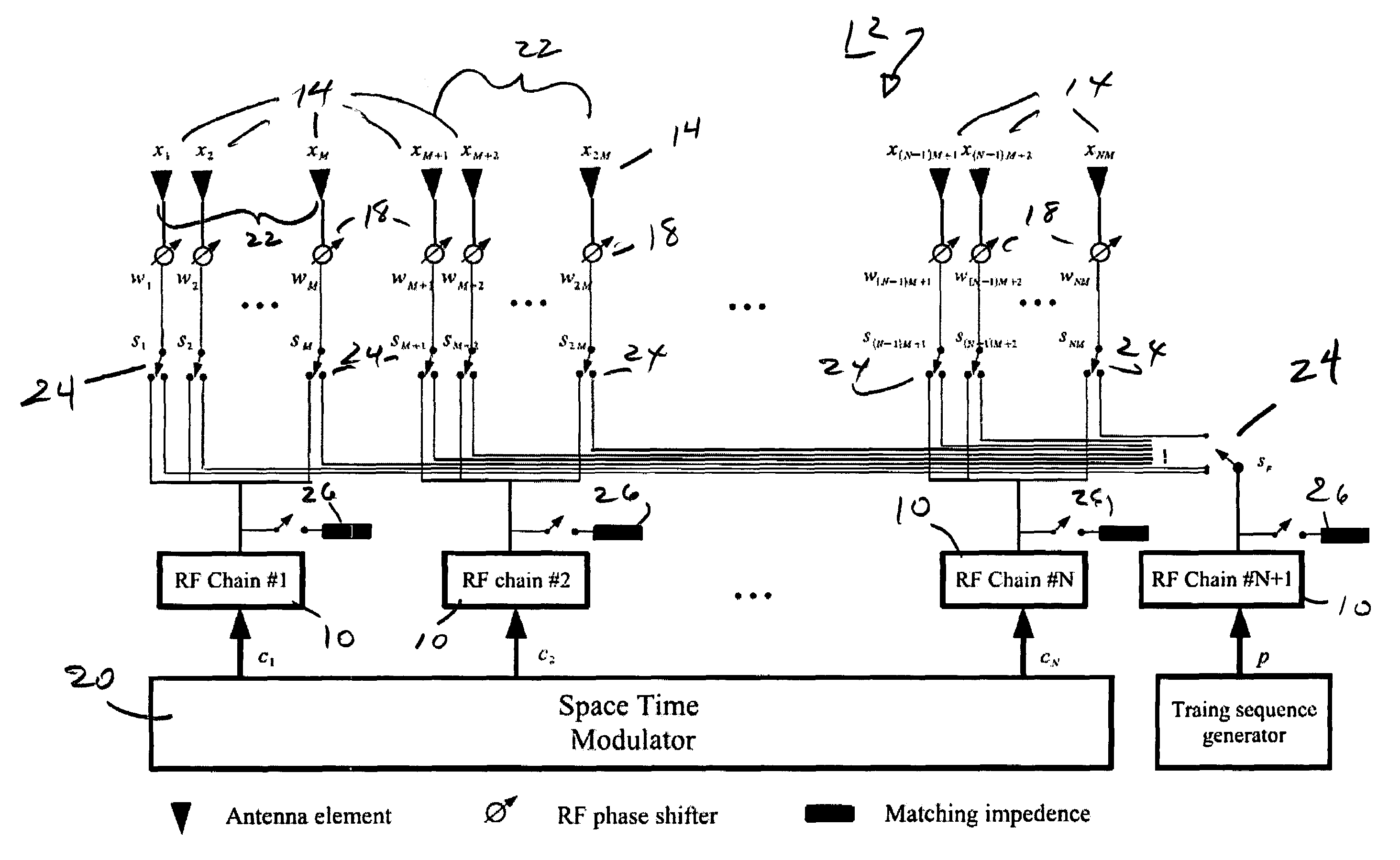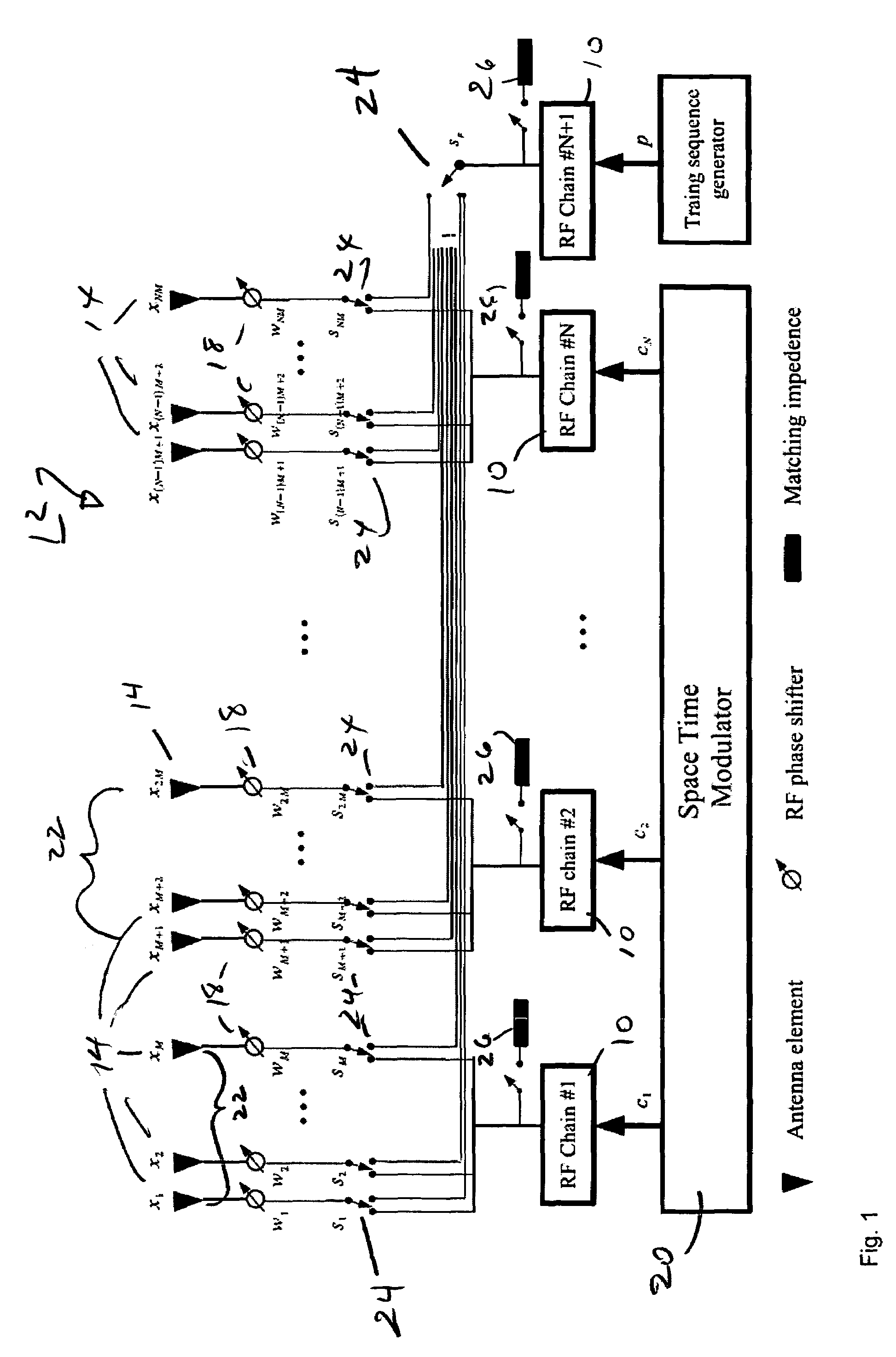Apparatus and method for a system architecture for multiple antenna wireless communication systems using round robin channel estimation and transmit beam forming algorithms
a wireless communication system and antenna technology, applied in the field of wireless communication, can solve the problems of much longer battery life of the receiver, achieve the effect of simple low cost transmitter, improve transmission efficiency, and improve transmission efficiency
- Summary
- Abstract
- Description
- Claims
- Application Information
AI Technical Summary
Benefits of technology
Problems solved by technology
Method used
Image
Examples
Embodiment Construction
[0050]In the illustrated embodiment we use an adaptive transmit beamforming scheme. In the illustrated embodiment of FIG. 1, only a small number of RF chains 10 are implemented at the transmitter or large antenna array 12. These RF chains 10 are divided into two groups. The first group is employed to drive all the transmit antennas 14 for normal data transmissions, while the next group has only one RF chain and it is used to transmit pilot training sequence on certain “selected” transmit antennas 14. The pilot sequence is transmitted by different ones of the selected antennas 14 in a round-robin fashion. At any time, the receiver (not shown) only needs to estimate a few channel path gains without interrupting the ongoing data communications. As the receiver gathers enough knowledge of the channel, it sends back the relative channel phase information to the transmitter 12. On the transmitter side, the RF phase shifters 18 in the LAA are adjusted to perform a standard co-phase transmi...
PUM
 Login to View More
Login to View More Abstract
Description
Claims
Application Information
 Login to View More
Login to View More - R&D
- Intellectual Property
- Life Sciences
- Materials
- Tech Scout
- Unparalleled Data Quality
- Higher Quality Content
- 60% Fewer Hallucinations
Browse by: Latest US Patents, China's latest patents, Technical Efficacy Thesaurus, Application Domain, Technology Topic, Popular Technical Reports.
© 2025 PatSnap. All rights reserved.Legal|Privacy policy|Modern Slavery Act Transparency Statement|Sitemap|About US| Contact US: help@patsnap.com



